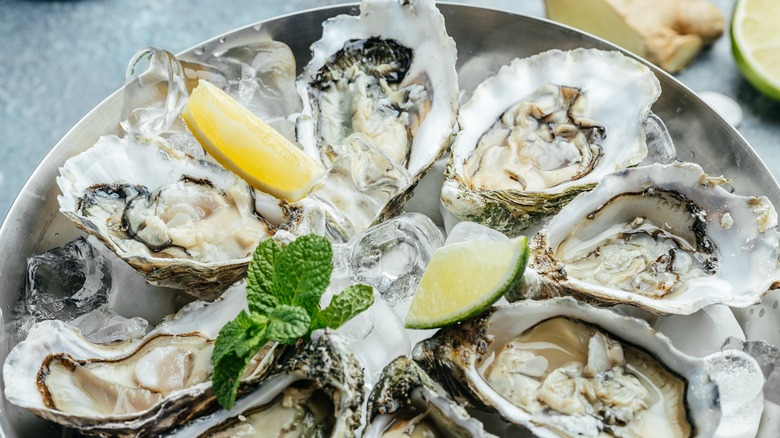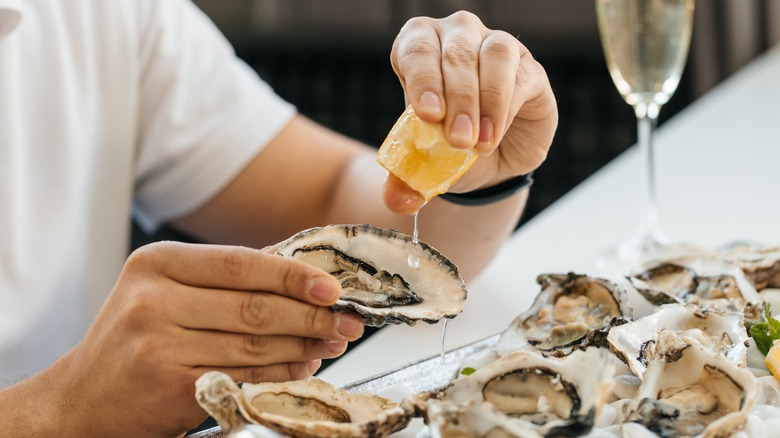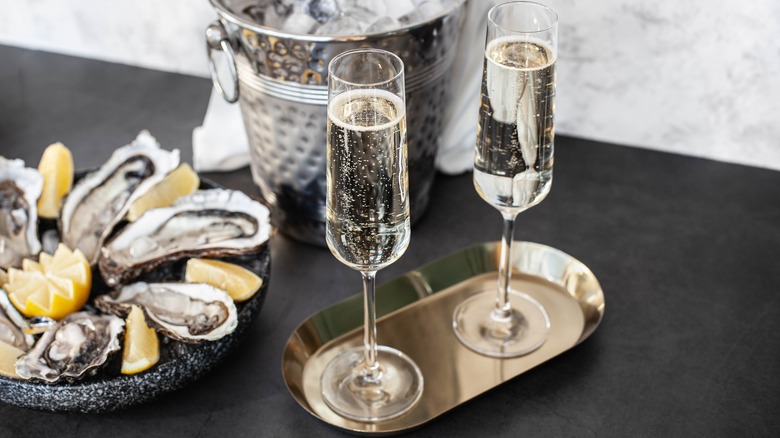What To Know Before Attempting To Eat Oysters At A Fancy Dinner
Oysters used to be an affordable meal for people of all budgets, but they became a high-class staple somewhere down the line — typically considered expensive and often garnished with pricey add-ons, such as crab or caviar. These days, it's not uncommon to find them at a fancy dinner as either an appetizer or preamble to an appetizer. But if you stumble upon oysters in this setting, you should know there is proper etiquette for eating them: flipped oysters signal you're finished, and there are rules for when you should (and should not) ask for an oyster fork.
Oyster forks are used to detach the oyster from the shell; they can also be used to consume the oyster if you prefer not to slurp. But if you're not given a fork, slurping is the expectation — a generally acceptable way to eat an oyster — and you should do so.
There are etiquette rules for eating oysters
If you're having dinner at an upscale restaurant, the chef most likely knows what they're doing. With that said, you might order a dozen oysters on salt or ice only to find that they are served sans oyster fork. Proper etiquette says to avoid requesting on, as receiving oysters without a fork indicates that they have already been loosened from their shells and are ready to eat. To eat an oyster without a fork, you simply slurp it as if it were a shallow bowl of soup. If you realize that the oyster is still slightly attached, it's acceptable to remove the oyster from its shell with a knife.
Oysters tend to be the same pale beige or gray color as the interior of their shells, so when a server passes by, they can't always tell which shells have oysters remaining. Once you're done with the oyster, you should flip it over. This signals that it's been consumed, and once all shells are flipped, the server knows to approach you and remove the tray.
How to properly eat an oyster
Oysters are meant to be a savory, palatable experience, and there are a few ways to ensure you're getting the most out of this briny shellfish. Oysters are often consumed raw, though you can certainly eat them fried or Rockefeller style (among other methods), and those techniques might be slightly different. When eating raw oysters, you should use a fork if given one rather than loosening the oyster with anything else. When it comes to enjoying this shellfish, make sure you chew it. Oysters aren't meant to be swallowed whole, and you might look a little silly at the table if you don't savor its salty profile.
Chef Kyle Bailey of the oyster restaurant The Salt Line in Washington, D.C., told Food & Wine that oysters should be enjoyed for their flavor and not overwhelmed with toppings. "When it comes to sauces and preparation ... you really only need a drop of lemon juice," he says.
As for what drink to pair them with, Bailey suggests champagne, scotch, or sake, ultimately depending on the oyster's salinity; if you're at an oyster bar, your server can likely help you decide the best fit. A proper drink pairing will help bring out the oyster's flavor even more.


